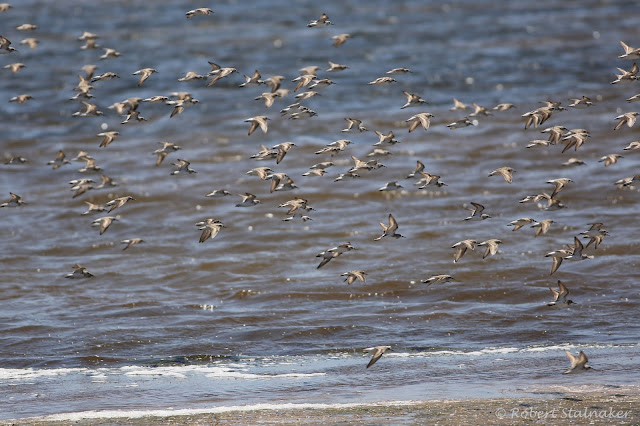30 May 2013, Merritt Island National Wildlife Refuge
CLICK ANY IMAGE TO ENLARGE
Four-spotted Pennant immature female
It is great to see the dragonflies become more numerous. The numbers were down two months ago for our Lake Apopka survey. Saturday, we do another survey and we should have much bigger numbers to report. These two dragonflies were two of many on East and West Gator Creek at Merritt Island NWR.
Marl Pennant female
I originally ID'd this incorrectly as a Common Baskettail female but Paul Hueber IDs it as a Marl Pennant.
On Blackpoint Wildlife Drive, it was a very slow day for birds. Out on the mudflats to the left, I finally found one lonely bird laying down and it looked dark. I thought maybe a breeding plumage Black-bellied Plover. Get the bins up and there is a bird I have never seen in these mudflats in all the years I have been going here ...
... a Common Nighthawk. It is supposedly common in the spring inside the refuge but this was a first for me.
I was hoping for an Antillean Nighthawk, but then again, I hope to win the lottery each drawing also. With very little action on Peacocks Pocket, Gator Creek and Blackpoint Wildlife Drive, it was time to take a look at Biolab Road.
Finally .... there were huge numbers of Semipalmated Sandpipers. Also, there were Rudy Turnstones in breeding plumage, quite a few Semipalmated Plovers, young glossy Ibis and your common refuge residents. At Canaveral National Seashore, even though the wind was blowing in strong from the east, there were no pelagic birds to be seen.
27 May 2013, Hernando and Pasco County
Last year, there was an area on the Pasco/Hernando County border where Mississippi Kites were being seen. This is considered rare in this part of Florida, although many believe the Mississippi Kite--a north Florida raptor--is expanding its range southward.
After reading reports about Mississippi Kites being seen in this same spot over the weekend, and the report also saying larger numbers of Swallow-tailed Kites than normal were there, I headed out there this morning. It was nice to see 11 cars of other birders who had the same thing on their mind.
Before the first Mississippi Kite showed up, Swallow-tailed Kites started gathering. 10, 20, then quickly it grew to 40 or so. Within 90 minutes, there were 100 Swallow-tailed Kites foraging in the pasture.
Is this any way to greet a guest? With 100 Swallow-tailed Kites in the air, this Swallow-tailed Kite picked out the Mississippi Kite entering the party and started diving on it and just kept harassing it until they both went out of sight. Note that the larger Swallow-tailed Kite is molting its feathers and looked pretty ragged. There was no loss of confidence by this Swallow-tailed Kite due to its molting. It was flying like a fighter pilot ace, even though many feathers are only partially grown in.
The Mississippi Kite looked faster in its dives and seemed to be more agile than the Swallow-tailed Kite. However, in the "fight" between these two, the Swallow-tailed Kite had its way and was on the offensive the entire time and the smaller kite was never able to get out of its defensive mode.
What a great sight to see--a Burrowing Owl. Not just one, a pair in Pasco County. But wait .... not just two but four with pair in Hernando County about 2 miles away.
What are you doing here? The guide book says this Carolina Saddlebags (female) likes ponds, marshes, lakes. There was no water in sight here but dry pasture everywhere. Oh well, I guess this girl said, "if the Mississippi Kite can be out of range, so too can I."
Update ... Paul Hueber IDs this as a Red Saddlebags. Thank you, Paul. Odonata Central show this species in Orange County but does not show it on the list for Pasco County where the image was taken. I have submitted this to Odonata Central and I am hoping that once they vet it, they come back and say it is a Red Saddlebags; that would be a Pasco County first.










No comments:
Post a Comment